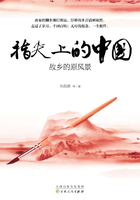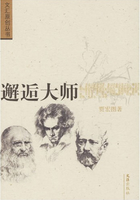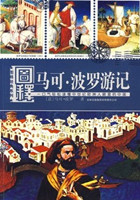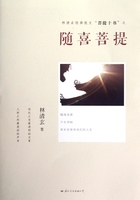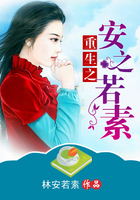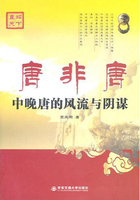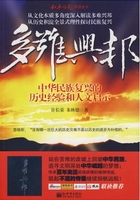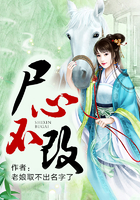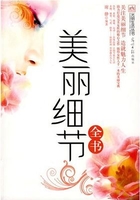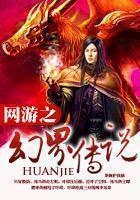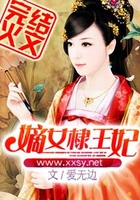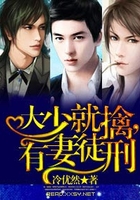博弈是东方文化生活的重要组成部分,它不但不同于一般的消遣游戏,而且还影响和陶冶着人们的道德观念、行为准则、审美趣味和思维方式。本篇介绍围棋、中国象棋、麻将的起源及其主要特点。
1.人们一般怎样看待博弈?
What do you think of the board game?
For thousands of years, people have been planning attacks, captures, chases, and conquests in a variety of different board games. Most such games commonly involve hunts or war tactics, races or chases, capturing or blockading a fortress. There are folk entertainments that have evolved through the centuries, and they exhibit endless local variations. These games have the fascinating similarities and differences that give each game its unique appeal as vital to a culture as music, dance and tale telling. Like other forms of entertainment, they do not singly give pleasure, they positively influence people’s morality, behavior and the way of thinking. New board games are invented almost daily and continue to attract new devotees and reveal new possibilities.
In China, board games have been long played in peoples’ recreational life. Along with zither playing, calligraphy and painting, board games constitute one of the four major forms of traditional Chinese art. In link with the Chinese tradition of rational culture, board games combine military strategies with philosophy, poetry and arts. They nurture wisdom, grace, generosity and a sense of indifference to the fame of winning or loss. Traditional games like weiqi (围棋, I-go) and xiangqi (象棋, Chinese chess) give rise to careful thought and enlightenment that expand infinitely.
Notes:1)capture占领;2)chase追逐;3)conquest征服;4)blockade封锁;5)variation变化;6)fascinating极美的;7)similarity相似之处;8)devotee爱好者;9)morality道德;10)behavior举止;11)rational理性的;12)indifference不在乎;13)generosity宽宏大量;14)infinitely无限地
2.什么是围棋?
What is weiqi?
Weiqi (围棋) is the Chinese name for the classic board game usually known in English as Go (from the Japanese go). It has never been as popular in terms of mass support as xiangqi (Chinese Chess), but in recent years professional players have emerged in China to challenge the top Japanese masters, and from 1970 onwards public interest in weiqi has grown in China.
A full-size weiqi board has a grid of 19 horizontal and 19 vertical lines. The lines are thin and black, and the grid contains 361 intersections. 180 white round pieces and the other 181 black pieces are used. These are called“stone pieces.”The basic rules are charmingly simple and easy to learn. Two players use their respective stone pieces to compete for territory on the surface of the board, in turn placing their pieces on the grid intersections. These pieces are not moved, but they may be captured, singly or in groups, by a player when he surrounds them. The winner is the player holding more of the board at the end of the game, which comes when both players agree that it is over.
Notes:1)emerge出现;2)grid格子;3)intersection交点;4)charmingly令人高兴地;5)respective分别的;6)territory版图
3.你对围棋的历史知道多少?
What is the history of weiqi?
It is generally thought that the weiqi’s equipment (black and white stones) is in existence for purposes of divination before the game rules were hit upon, and that some forms of the game have been around for 4,000 years. Accounts of weiqi quote a legend saying that a man named Yao (尧) invented weiqi in order to instruct his son Dan Zhu (丹朱). Between the Spring and Autumn Period and the Warring States Period, weiqi developed rapidly. Later, in the Han Dynasty both 17×17 and 19×19 boards co-existed. In the Three Kingdoms Period, it seems that weiqi experienced one of its times of peak interest. Between the Jin Dynasty and the South and North Period, the present full-size weiqi board began to be formalized. During the South Period, weiqi-ranking sets began to be used. Players who were competent were ranked, from one to nine, the highest rank. Weiqi was thought to illustrate the classical military theory of Sun Zi (孙子) and subsequent military strategists, and during the Tang Dynasty, weiqi experienced another time of peak interest. At that time, it was regarded by literati as one of their important intellectual pursuits. During the later Song Dynasty, weiqi began to lose its linkage with military thought and came to be regarded simply as a skilled competitive game. Along with full-time professional weiqi players, many of literati enjoyed playing it. Moving forward to 16th and 17th centuries, we find a large amount of materials concerning game strategies that show that weiqi was played at a level of proficiency beyond today’s amateurs.
Weiqi was taken to Japan before the year 1000, and it was cultivated at court and in certain Buddhist sects. In the 1950s,a professional weiqi system was established in Korea,when weiqi master Cho Nam-chul returned from professional training in Japan. Today weiqi is more popular in Korea than anywhere else in the world. It is estimated that from five to ten percent of the population regularly plays it.
Notes:1)equipment设备;2)co-exist共存;3)formalize使正式;4)competent有能力的;5)linkage联系;6)literati文人;7)competitive竞争的;8)proficiency精通;9)amateur业余从事者
4.围棋的基本规则是什么?
What are the basic rules of weiqi?
The essential rules of weiqi are as follows:
a. Two players take turns placing black and white stones on the board’s points of the line intersections. Black moves first in an even game. In a handicap game, black (the weaker player) has a number of stones on the board, and white starts the game.
b. The object of the game is to surround and control more points or territory than your opponent.
c. Tactical rules:
①A single stone may be placed on almost any empty intersection. Stones can’t be moved after being placed, but they may be captured and removed from the board by the opponent.
②A group of stones consists of stones connected via straight lines but not diagonals.
③When one places a stone on an empty board, it usually has four empty spaces surrounding it. Stones on the edge have three, and those at the corners have two. These are called liberties.
④The number of liberties in a grouping is constituted by the total number of empty spaces connected to any stone in the group.

